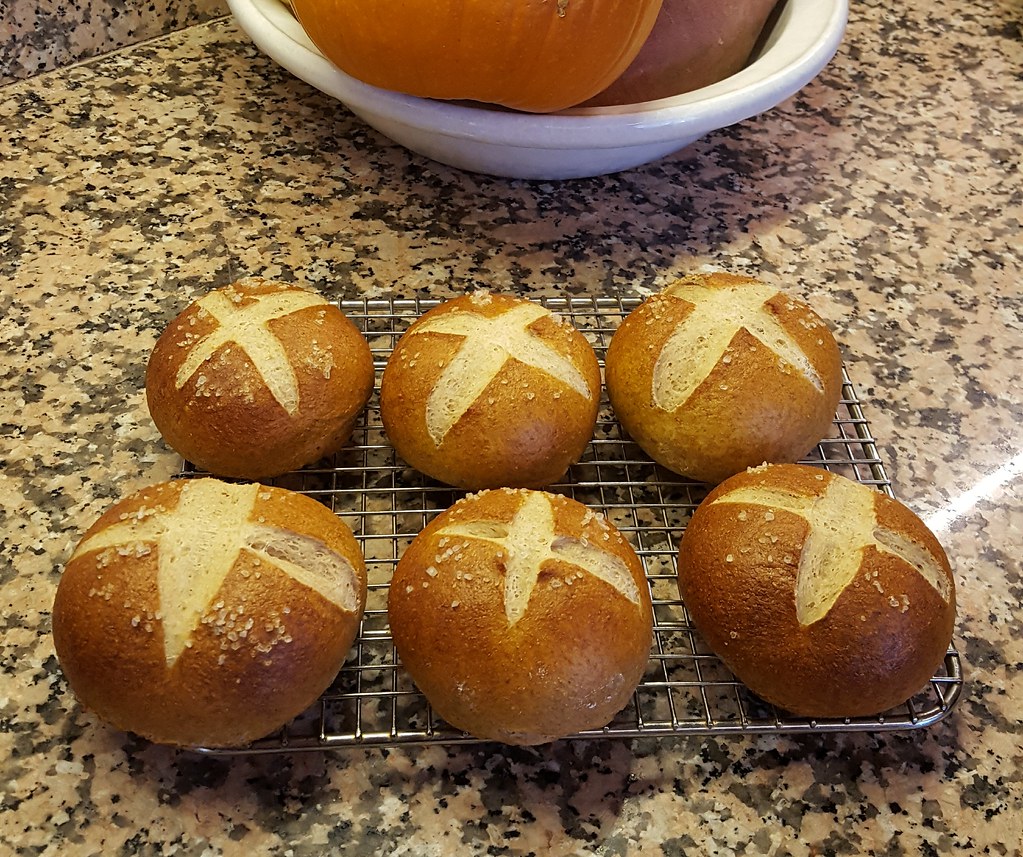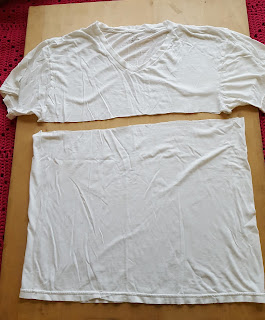 |
| Homemade Laugenbrötchen |
For years and years, I've been trying to bake Laugenbrötchen at home, or even find them in a bakery--every German bakery that we've visited hasn't heard of them. When we visit our friends in Baden-Württemberg, we eat as many of them as we possibly can--we just love them.
On our last trip, we visited the wonderful Museum Brot und Kunst and found a fantastic cookbook, Laugengebackenes Brezeln, Brötchen, und mehr by Hanna Renz. The recipe for Laugenbrötchen is fantastic--they taste just like the ones in Germany! Preceding all the recipes are easy to follow, step by step instructions as well.
The book is entirely in German--here are the ingredients, as well as my adaptation into U.S. measurements and into my own preferred bread baking methods. The first time I followed the recipe, I followed it exactly, then adapted it the second time for the same tasty results with my own preferred ingredients and amounts (e.g., a bit less salt in the dough).
680 g Weizenmahl (Type 550) / about 1-1/2 pounds of flour (I use from 50% to up to 100% freshly ground whole wheat)
3/4 W. fr. Hefe (30 g) / 2-1/2 tsp. dried yeast
400 ml handw. Wasser / 1-1/2 c. room temperature water
2 TL Salz / 1-1/2 tsp. salt
1/2 TL Zucker / 1-1/2 tsp. agave syrup
20 g Margarine / about 2-1/2 tbsp., or a little more than 1/4 stick, raw cultured butter
Etwas grobes, gekörntes Salz zum Bestreuen / Coarse salt for sprinkling on top
1 L water / a bit more than 1 quart water
3 EL Natron / 2 tbsp. + 1 tsp. baking soda
Method:
Put yeast in bowl, add the smaller amount of water, agave syrup, salt, and butter, then enough flour to knead into a rather stiff dough.
Note: raw cultured butter is softer than regular butter, so it will mix in straight out of the fridge, and definitely mix in easily at room temperature, but if you're using regular butter, you may wish to soften it.
For 25%-100% whole wheat, I let the dough rest for 20 minutes, then knead it for 10 minutes, in my mixer with a dough hook. This step isn't necessary for all white flour.
Let rest for 15 minutes, then shape into 12-14 balls on a floured counter and cover with a towel. Let the balls rest for about 30 minutes.
Reshape the balls and put back onto the counter, under the towel, and let rest for about another 30 minutes. In the meantime, put the larger amount of water into a 1 quart saucepan (a little deeper than wider is better) and let it heat up and preheat the oven to:
Elektro 210C / Electric or gas bake 375F
Umluft 190C / Convection 350F
Gas Stufe 3-4 / (I don't know the equivalent of this setting)
[Update, Nov. 11: my friends in Europe says this is the equivalent of about 180C/350F.]
Prepare a baking sheet with parchment paper or butter it, and have a sharp knife and a slotted spoon handy.
After the buns have finished this last resting, bring the water to a boil, turn down a bit, and very carefully add only up to 1 tbsp. of baking soda to the boiling water at a time--it will foam up a lot. Add all the baking soda to the boiling water very carefully. Bring the baking soda/water bath to a gentle simmer; you'll be adjusting the temperature as you bathe the buns to keep it at a low simmer. One at a time, put a bun into the bath (I put it in upside down) and let it simmer for 10 seconds, then turn it over and let it simmer another 10 seconds for 20 seconds total; take it out of the bath and place it on the prepared sheet. Cut a cross in the top with the sharp knife and sprinkle coarse salt onto it to taste. Repeat with all the buns.
Bake the buns for about 17-20 minutes, until they're nicely brown on the bathed parts of the buns.








